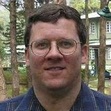Looking at the Ins and Outs of Worldview
I am reading an article by Michael T. Cooper, “Necessity of Worldview Understanding for Sustainable Peace: A Case Study of United States Relations with Native Americans in the 18-19th [Sacred Tribes Journal Volume 4 Number 2 (2009):113-131]. It had a nice discussion on worldview as well as a Venn Diagram. (I am always a sucker for Venn Diagrams).
Cooper references David Naugle who explains worldview as a “semiotic phenomenon.” That is fine, but one could argue that pretty much everything regarding human thought is. But then Naugle goes on to note that one can understand worldview “as a system of narrative signs that establishes a powerful framework within which people think (reason), interpret (hermeneutics), and know (epistemology).” [pg 114] Cooper suggests a similar idea expressed differently as: “Worldview, then, is created by the degree in which one’s culture, belief
system (whether religious or non religious) and ethnicity/race interact to explain the perception of reality” [pg 114]. Cooper then shows worldview with three components as a Venn diagram on page 115. Here is a SLIGHTLY modified version of that figure. (The white area in the middle is not labeled, but it is simply that part of worldview that is fully impacted by all three sources— beliefs, ethnicity, and culture.

To me where I find it interesting is the sources of each, as noted by Cooper. Culture is generally achieved. We are born “Tabula Rasa” (blank slate) in terms of culture and we slowly enculturate into the context. There is also a sense in which culture is ascribed, but in this model, the aspect in which it is ascribed is under Ethnicity. Therefore: Ethnicity is generally ascribed, but the community, as well as by those outside of the community.
Beliefs and Religion is perhaps a bit more complex. There is an aspect in which this area is ascribed. I am a Christian, in part, because I was rised in a culturally Christian region to Christian parents. As a Baptist, I would balk at the idea that it is ascribed since we would not use the term Christian to someone who has not consciously and voluntarily embracing following Christ. But this is not about soteriology (what makes one saved… or a “Christian”). It is about the sources of our worldview. There are aspects in which my beliefs are achieved and aspects in which they are ascribed. Overall, this is the most ‘individuated’ of the three circles. Even in cultures where there is strong pressure, even dogma, linking ethnicity with religion, that does not speak strongly to individuals’ worldviews. Some people embrace the faith of their culture or ethnicity, while others wear their religion like a coat. In such a case their religion is like a coat in that it something worn to fit into a setting, and provide some protection; but at the same time is external to the person and can be removed (even if only temporarily) if convenient.,
The above diagram at first seems quite different from Linwood Barney’s figure on Layers of Culture.

However, when one looks at the two figures, it is clear that their primary aims are essentially the opposite. In the Venn diagram, the image suggests how worldview forms in a person. With Barney’s concentric circles, the image suggests how worldview impacts other things in a society.
I am not going to bring the two images together into one. But if I did, one would find a loop in it. Beliefs/religion impacts worldview, AND worldview impacts Beliefs/religion.
Is there any amazing insight from this that would have practical application in ministry? I am not sure. However, I think the fact that there is a non-linear loop in how worldview is developed and lived out, should, if nothing else, draw us to question overly simplistic understandings of worldview. I know that some missiologists suggest a one-to-one relationship between worldview and religion. Thus, each religion has its own unique worldview. While I see how one can see it that way, the dynamics related to worldview seems to make such a perspective less than useless.
Worldview can be explored through Barney’s model— starting with behaviors working back to institutions, and then to exploring beliefs and values. OR one can explore worldview in terms of formation— as a non-static, iterative process of enculturation, ascribed and achieving symbols, and an acceptance or rejection of context-driven beliefs and religion.
Discovering any person’s worldview, then, is like attempting to catch a will-o-wisp (or some fog) in a butterfly net. It is constantly changing and creating change.
Does that make worldview useless as a concept? No, I don’t think so. But that is the point— worldview is a concept… not a thing. As we seek out a person’s worldview we are not going after something that can be found and captured. Rather, WE ARE LEARNING ABOUT THE PERSON THROUGH THE SEARCH. Anton T. Boisen describes a person as a living human document. As we read the person, and interpret what we read, we gain a clearer understanding of who he/she is— the fact that we can never get to a point that the person is fully grasped is part of what is amazing about being human.
By the way, the article I referenced at the top of the post by Michael T. Cooper, is a really good article. I STRONGLY RECOMMEND IT.



